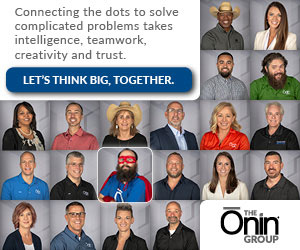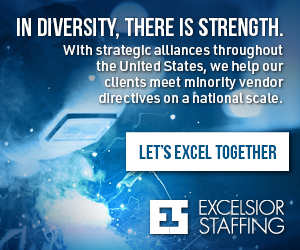Before COVID-19 hit, American manufacturing companies were facing a massive shortage of workers and record-low unemployment rates. Recruiting and retention made every hiring manager’s hair turn a shade grayer. Then, 2020 hit.
2020 was a rollercoaster for every industry. Layoffs ensued for many companies deemed non-essential in the economic shutdown. This development was followed by a slew of rebound hires by some companies and a cautious process of systematic hires for others. For many businesses, the recruiting process got a new facelift, thanks to COVID-19, as outdated systems became increasingly digital.
But in addition to COVID-19 and the economic fallout, company recruiting was also impacted by a different trend of 2020: diversity.
George Floyd’s death kicked off a new awareness of diversity. Public-facing companies scrambled to demonstrate their commitment to diversity, but oftentimes, the diversity measures did not extend beyond public relations.
The reality is, there are practical applications for companies that want to take diversity seriously. Incorporating inclusivity measures within recruiting processes has the potential to help all companies in all industries. In a tight and tumultuous labor market, making job opportunities more desirable and open to new pools of talent will help employers recuperate and build better, more stable teams. Likewise, applicants desire to work at jobs that promise to be inclusive, with more than half of professionals (58%) saying they want more inclusive job descriptions, according to Criteria Corp.
Embracing diversity and inclusion may be especially helpful for companies trying to fill the growing skills gap as older skilled workers continue to leave the workforce. Drawing young people from diverse groups who have traditionally not been wooed by the manufacturing and light industrial industries can help fill the skills void for decades to come.
So, what can companies do to start embracing diversity in their recruiting? Taking measures like the following are great places to start:
- Assess your current hiring processes. Are they fair? Are they inclusive? Are you unintentionally creating any barriers for certain groups?
- Open up new channels of recruiting such as cultural associations, community groups and school systems.
- Ensure the language of your job descriptions makes sense across different cultures, and be prepared to make accommodations for language barriers.
- Assess your company culture. Ensure employees are discouraged from discussing stereotypes about ethnic, racial or social groups that could be toxic.
- Create a mentorship program that pairs new workers with veteran employees. This will help new workers acclimate to your work culture while also generating innovation and a stronger team spirit. A mentorship program is a great perk to attract applicants, especially those who are young and just beginning their careers.
- Review your hiring, termination and turnover rates. If your rates are disproportionate for certain groups, conduct exit interviews to determine the problem and create a more fair workplace.
Difficulty recruiting and low retention rates aren’t going away any time soon, but 2020 has taught us adapting is both necessary and the key to future success. Recruiting won’t be easy in 2021, but by incorporating more inclusive recruiting measures and ensuring your culture is open to new voices, companies can develop more dynamic teams than ever.






